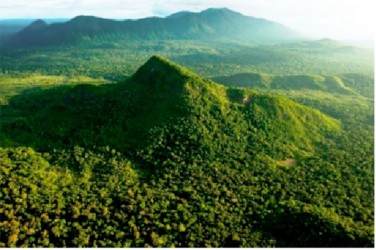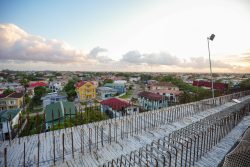Sixteen years after the Kanuku Mountains was first proposed as a potential protected area, its management plan will soon be implemented.
According to Protected Areas Commission (PAC) Commis-sioner Damian Fernandes, the plan for the Kanuku Mountains Protected Area (KMPA) is in the penultimate stage and will finally be completed following the draft’s presentation and review by stakeholders.
Fernandes told a public meeting on the draft plan on Tuesday that the management plan will cover the period 2015 to 2019
The meeting was aimed at sensitising the public fully on the plan.
Speaking at the meeting, Ministry of Natural Resources and the Environment (MNRE) representative Veetal Rajkumar emphasised the importance of the KMPA and pledged his ministry’s commitment to the initiative.

“The Ministry of Natural Resources and the Environment recognises this initiative as another milestone in establishing a world class protected area system, with the aim of establishing an environmental equilibrium,” Rajkumar said.
He added, “It is quite evident that the Kanuku Mountains and more widely Region Nine possesses high levels of biodiversity and wide ranges of eco-system services.”
For this reason, he said, the MNRE is dedicated to the KMPA and plans to build two new offices later this year in Lethem. These offices will house the Environmental Protection Agency (EPA) and the PAC to ensure that there is a high level of monitoring and enforcement in the area.
The plans of the ministry and the commission are intended to create an effective and globally recognised national protected areas system, which is expected to bring decades of international experience in shaping a protected areas system.
Rajkumar lauded the contributions of the ministry’s bilateral partners, particularly the German government, and expressed optimism at the possibility of other countries coming onboard.
Participatory process
The formation of the Draft Management Plan was first set in motion in May 2007 and, according to Patricia Fredericks, Community Engagement Specialist, the drafting of the plan had been a participatory process.
Fredericks explained that the process was led by Conservation International and required a number of consultations and workshops with residents of Region Nine before its current state.
The initial workshop focused on the delineation of boundaries for the KMPA and from these meetings a community representative group was formed to interact with the KMPA officials.
“What is more important is to ensure that all stakeholders, in particular the residents, fully understand the plan and are in agreement to move forward with this initiative,” Rajkumar explained.
Further, Fredericks said, the Amerindian Act was also consulted to ensure that no Amerindian titled lands were included in the KMPA. The Ministry of Amerindian Affairs also worked closely with KMPA officials, she added.
The first draft was subsequently completed in 2008 and visits were paid to a number of communities to explain the plan. Later, the plan was reviewed once more before it was taken to representatives in Lethem in late 2014 to undergo severe scrutiny.
According to Fernandes, the plan is made up of two parts—a main document and a condensed appendix.
The core plan is 20 pages long, he said, in order to make it accessible to persons.
Fernandes further said that an annual effectiveness tracking tool will be implemented to keep the plan modern and relevant. “The plan is really designed to be a living document so, as issues emerge from one year to the next, we are able to adapt and adjust,” he explained.
According to Chuvika Harilal, a Senior Protected Areas Officer with PAC, the KMPA is one of three hinterland protected areas along with Kaieteur and Shell Beach. She said the KMPA is 611 hectares and covers about 11% of Region Nine. Furthermore, the KMPA is a category six protected area, which means that area has a protection of its managed resources.
The KMPA is also the largest protected area and covers about 2.8% of the country. It is home to about 60% of Guyana’s birds, along with 80% of all its mammals.
Harilal stated that KMPA offers a unique opportunity to preserve Guyana as it has a high diversity of bird and fish species, extensive and pristine forest coverage and water quality and climate regulation.
Harilal also said the programme will aim to ensure sustainable use of the area’s natural resources, while supporting the development and implementation of land use plans in the surrounding communities. There are 21 communities surrounding the KMPA, she noted, while emphasising that the vision for the KMPA is to use its resources but to do so sustainably.
According to Fernandes, the programme has managed to secure some funding from the German government in the sum of €5 million, which will cover the start-up capital needed. Beyond that, he said, money will come from the Protected Areas Trust Fund.
The KMPA, he added, is yet at the point of being self-sufficient.
The deadline for review of the plan is January 27 and it is available for viewing on MNRE’s website (www.nre.gov.gy), Harilal said.





